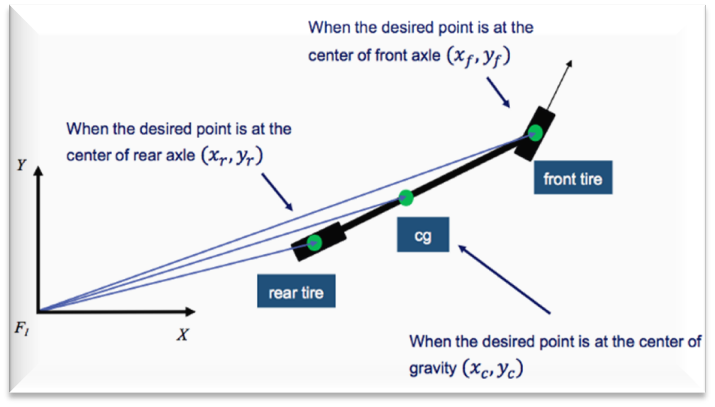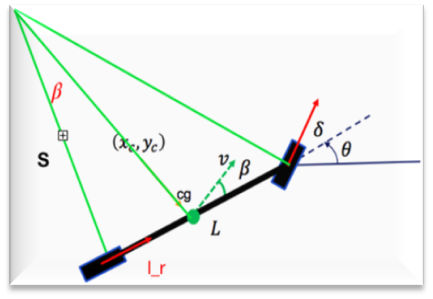(Part of Self Driving Car Specialization)
Analysis of 2d bicycle kinematic model and implementation of rear wheel using matlab
**Fig 1 : 2D Bicycle Kinematics for Front Wheel Steering Model**
**Fig2: Bicycle Model**
**Fig3: Model Analysis of Rear Wheel**
**Fig4. Model analysis at Front Wheel**
**Fig5. Model analysis at CG**
If the desired point is at the center of gravity or cg. ẋ = v * cos(𝛽 + 𝜃) ẏ = v* sin(𝛽 + 𝜃) For R and 𝜃_dot, S is computed as shown in figure 5: S = L / tan(𝛿) R = S / cos (𝛽) = L / (tan (𝛿) *cos (𝛽) ) 𝜃_dot = v / R = v *tan (𝛿) *cos (𝛽) / L
**Fig 6: Analysis for 𝛽**
Furthermore, if we know the distance between the rear wheel and cg denoted as l_r, we can also compute the slip angle 𝛽. Tan (𝛽) = lr / S = lr / ( L / tan (𝛿) ) = lr * tan(𝛿) / L So slip angle: 𝛽 = arctan(lr * tan (𝛿) / L ) 𝛿_dot = 𝜑
The model start its simulation from initial conditions of , move Left by π/3=60o and then turns Right by π/3=60o.
**Fig 7-8 : Starts from [0 0 π/4] and Turns Left by π/3**
**Fig 9-10 : Model Turns Right by π/3**










